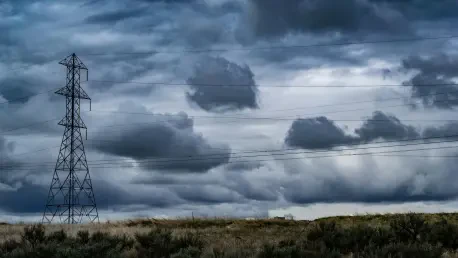In a time where technology and the weather meet at an intriguing crossroads, Oscar Vail offers insights into the severe weather conditions projected for Thursday and Friday. Vail, an expert recognized for staying ahead in the fields of quantum computing and robotics, marries his passion for technological advancement with meteorological analysis. In this interview, he delves into the warnings associated with upcoming storms and the technological avenues residents can leverage to stay informed and prepared.
Can you provide an overview of the severe weather conditions expected on Thursday and Friday?
The forecast indicates developing weather systems that are likely to result in isolated to scattered thunderstorms, particularly as we move into Thursday evening. These storms carry the potential to intensify, reaching severe levels, with damaging winds as a primary concern. On Friday, a cold front’s approach elevates the risk, bringing more organized thunderstorms capable of producing damaging winds, hail, and possibly even nocturnal tornadoes.
What specific times should residents be most alert to severe weather conditions?
The critical period to watch on Thursday is between 7 PM and 1 AM when the intensity of storms could spike. Then, on Friday, residents should remain vigilant in the late afternoon and evening as the cold front moves through, likely escalating weather conditions to severe levels.
What are the main hazards associated with the severe storms expected?
The primary hazards include damaging wind gusts, which could pose significant risks to structures and power lines. Additionally, there’s potential for hail formation and isolated tornadoes, which call for heightened attentiveness, especially at night when visibility is reduced.
How are temperatures expected to change before, during, and after these storms?
Prior to these storms, we anticipate a warming trend with highs reaching the low 80s. Following the passage of the cold front on Friday, temperatures are expected to dip into the upper 50s overnight, bringing a cooler and less humid air mass into the weekend.
Is there a chance of severe weather affecting areas outside the main forecast zone?
While the focus is on the forecast areas directly impacted, it’s important to note that severe storms can potentially propagate beyond predicted boundaries, particularly under certain atmospheric conditions. Residents outside the main forecast zones should therefore remain cautious, as isolated storms could reach severe levels unexpectedly.
Can you describe the weather conditions expected after the storms pass through?
Once the weather system subsides, we should see much calmer conditions taking hold. The weekend forecasts suggest a mix of sun and clouds with temperatures stabilizing in the upper 70s to low 80s, providing some respite from the severe weather earlier in the week.
How is the upper-level ridging pattern influencing the weather into the weekend and early next week?
The introduction of an upper-level ridging pattern will likely stabilize the atmosphere, reducing the likelihood of severe weather. This ridging should lead to sunnier skies and a gradual warming trend, especially as we head into early next week.
Are there any other weather threats anticipated through the weekend, like isolated showers or storms?
Though largely serene, the presence of a weak boundary along the Atlantic may stir a few stray showers or thunderstorms. These isolated events might be capable of producing gusty winds or small hail, but widespread severe activity is not expected.
With the historical data in mind, how does this weather pattern compare to previous years around this time?
This weather pattern shares similarities with typical late spring transitions, where warming trends precede the arrival of cold fronts triggering thunderstorms. However, the specific dynamics and intensity fluctuate year by year, highlighting the unique nature of this season’s developments.
How can residents best prepare for the severe weather predicted on Thursday and Friday?
Preparation begins with staying informed. Residents should secure outdoor items, check emergency kits, and be ready to take shelter if alerts are issued. It’s also wise to review and rehearse safety plans with family members ahead of time.
Are there any resources or methods you recommend to keep informed about weather updates and alerts?
Taking advantage of modern technology is key. Weather apps that provide real-time alerts, local news stations, and government websites offer reliable information. It’s also beneficial to have a NOAA weather radio, which provides updates even when internet or cellular networks are down.









